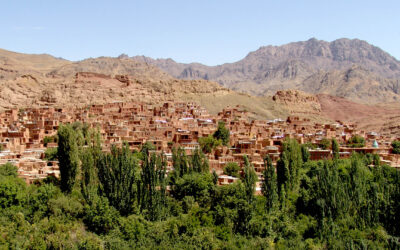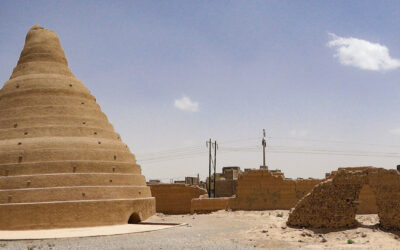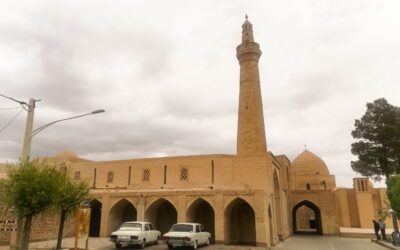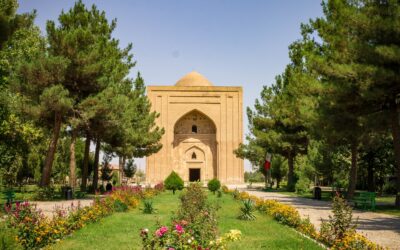JAMI’ MUSJID OF ISFAHAN
JAMI’ MUSJID OF ISFAHAN
JAMI’ MUSJID OF ISFAHAN
JAMI’ MUSJID OF ISFAHAN
JAMI’ MUSJID OF ISFAHAN
JAMI’ MUSJID OF ISFAHAN
JAMI’ MUSJID OF ISFAHAN
JAMI’ MUSJID OF ISFAHAN
- The city of Isfahan occupies a strange, indefinable niche in the impressive catalogue of Persian cities. It is neither the current the capital city, nor the largest, nor
- the oldest. Despite all that, it is the most quintessential of Persian cities, with an extremely rich cultural and religious heritage.
- The Jami’ Musjid is one of the oldest, largest and most beautiful Musjids in Iran. Its ever-evolving blend of styles helped to define Persian usjid architecture, and its influence can be seen all over the Middle East today. It therefore enjoys a special place in the history of Islamic architecture.
- It can be described as an architectural documentary, visually embodying the political exigencies and aesthetic tastes of the different empires of Persia from the 8th through to the 20th centuries.
- The Musjid’s core structure dates primarily from the 11th century when the Seljuk Turks established Isfahan as their capital. An earlier Musjid with a single inner courtyard already existed on the current location. Under the reign of Malik Shah I (ruled 1072-1092CE) and his immediate successors, the Musjid grew to its current four iwan (portal) design. The construction was directed by two of the city’s greatest viziers, Nizam Al-Mulk and Taj Al-Mulk. According to legend, these two were fierce political rivals, and each desired to make his mark on the great Musjid. Nizam oversaw the construction of the magnificent south dome and a few years later, Taj showed him up by building the even more magnificent north dome.
- The Musjid survived from medieval times until the modern age comparatively well. Unlike many of its contemporaries throughout the Middle East, the Musjid was spared the ravages of the Mongols when the leaders of Isfahan wisely surrendered the city without a fight. During the Mongol and later Timurid occupations, the Musjid was greatly expanded and renovated in a magnificent Central Asian style, the first great Musjid of Persia to undergo such a transformation.
- An elaborately carved stucco mihrab (prayer niche) commissioned in 1310 by Mongol ruler Öljaitü, located in a side prayer hall built within the western arcade, really adds to the beauty of the Musjid. The exquisite stucco mihrab is adorned with dense Quranic inscriptions and floral designs and is named after Öljaitü.
- As it stands today, it incorporates more major architectural elements from more major periods than almost any other Musjid in Iran. Thanks to good planning and integration, the Musjid is less of a stylistic mishmash than might have been.
- A distinguishing feature of this Musjid is its urban integration. Positioned at the center of the old city, the Musjid shares walls with other buildings abutting its perimeter. The Musjid formed a pedestrian hub, connecting the arterial network of paths crisscrossing the city. Far from being an insular sacred monument, the mosque facilitated public mobility and commercial activity thus transcending its principal function as a place for prayer alone.
KASHAN BAZAAR
One of the entrances to the bazaar Kashan’s historic bazaar is one of the best in Iran. Described as being ‘large enough to surprise but not to get lost in’, it stocks a variety of goods ranging from traditional to modern. Amazingly, the site has been the centre of...
ABYANEH VILLAGE
Homes in Abyaneh The picturesque village of Abyaneh sits at the foot of Karkass Mountain, 70km south-east of Kashan in the province of Isfahan. The village is believed to be around 1500 years old making it one of the oldest surviving villages in the country. Abyaneh...
NATIONAL MUSEUM OF IRAN
Interior of the Museum The institution which is around 70 years old contains approximately 300 000 artefacts. It is the largest in the country and also one of the few prestigious museums of the world with regard to grand volume, diversity and quality of its artefacts....








